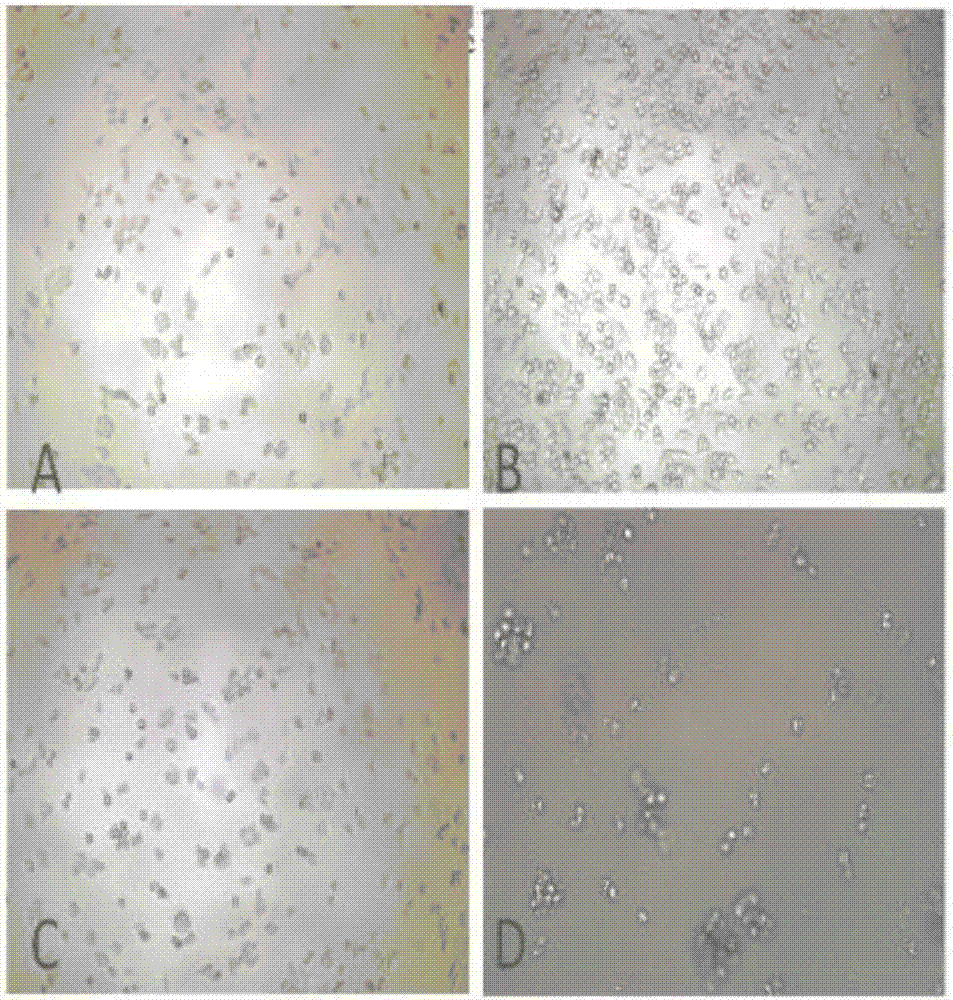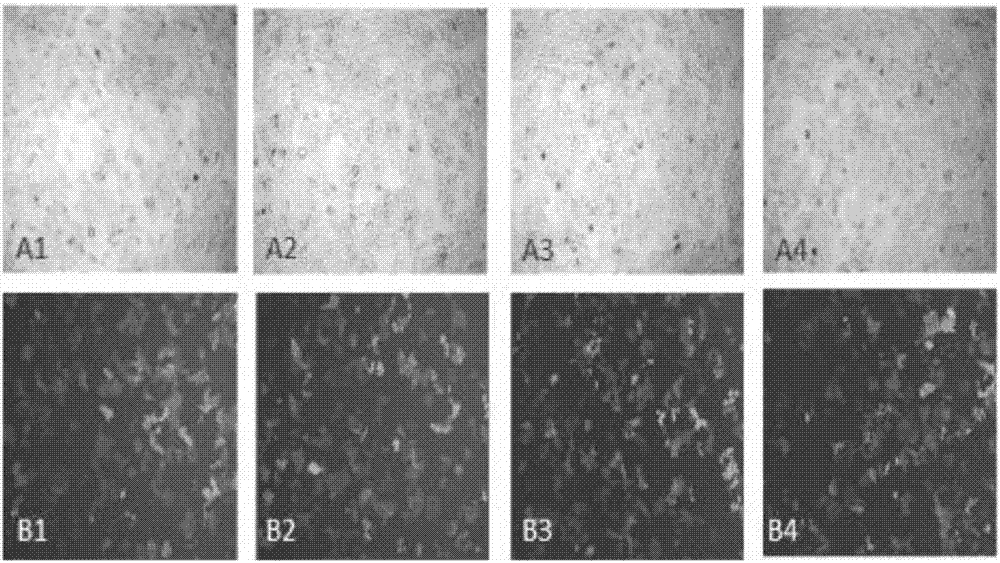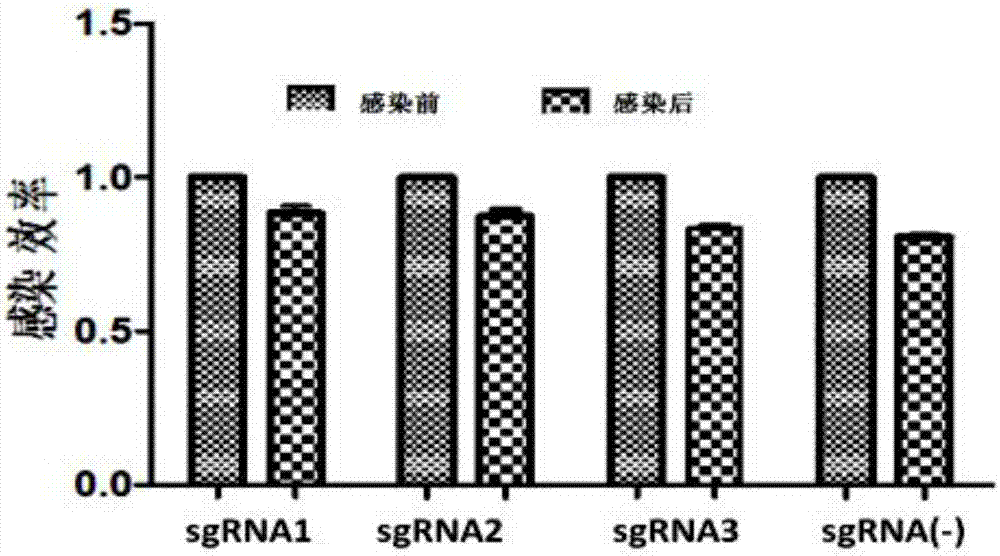sgRNA of targeting IGF-IR gene, and applications thereof
An IGF-IR, gene technology, applied in the field of genetic engineering, to achieve the effect of decreased migration ability
- Summary
- Abstract
- Description
- Claims
- Application Information
AI Technical Summary
Problems solved by technology
Method used
Image
Examples
Embodiment 1
[0040] (1) Recovery of HepG2 cell line
[0041] The cryopreservation tube of the human liver cancer HepG2 cell line was taken out from the -80°C refrigerator by rapid thawing, and immediately placed in a 37°C constant temperature water bath to thaw quickly with shaking for 1 min. Disinfect with ethanol first in the ultra-clean bench, and then turn it on. Use a pipette to suck the HepG2 cell suspension into a centrifuge tube with nine times the volume of complete culture medium (referred to as complete culture, DMEM containing 10% fetal bovine serum), mix well and centrifuge at a low speed (1000rpm×5min) in a centrifuge. Discard the supernatant, then add 5mL of complete culture solution, pipette and mix well, then inhale into a culture bottle, place at 37°C, 5% CO 2 And cultivate in an incubator with saturated humidity, observe the cell growth the next day, and replace the culture medium.
[0042] (2) HepG2 cell line culture
[0043] When the cell confluence is greater than 80...
Embodiment 2
[0049] Construction, infection and screening of Crispr / cas9-sgRNA dual vector lentivirus
[0050] (1) Construction of lentivirus targeting IGF-IR gene
[0051] According to the human IGF-IR sequence (NCBI: NM000875) and the principle of Crispr / cas9-sgRNA technology, three sgRNA sequences were designed:
[0052] sgRNA-1: 5'-TCAGTACGCCGTTTACGTCA-3; (interference-1)
[0053] sgRNA-2: 5'-TGTTTCCGAAATTTACCGCA-3'; (interference-2)
[0054] sgRNA-3: 5'-GGCTCTCTCCCCCGTTGTTCC-3'; (interference-3)
[0055] And construct the plasmid vector Lenti-CAS9-puro and Lenti-sgRNA-EGFP.
[0056] (2) Target cell lentivirus infection and screening
[0057] Liver cancer HepG2 cells not infected with lentivirus were inoculated in 6-well plates to achieve 70-80% confluence. After the cells were attached to the wall, 1 μg / mL, 2 μg / mL, 2.5 μg / mL, 3 μg / mL of puromycin (puromycin) drug, observe the cell morphology after 48h to carry out the screening of the lowest lethal concentration, so as to obtai...
Embodiment 3
[0062] Cell proliferation detected by CCK-8 method
[0063] According to the operation steps of the instructions provided by the CCK-8 kit, a blank control group, a negative control group, and an experimental group were set up. Cells in the logarithmic growth phase in good growth state were taken, digested with trypsin, prepared into a cell suspension, and then inoculated in 96-well plate (n=3), about 100 μL per well, put the 96-well plate in the incubator for pre-incubation (37°C, 5% CO 2 Under the conditions), take it out at a predetermined time point and change the medium, add 10 μL of CCK-8 reagent to each well, continue to incubate in the incubator for 1-4 hours, and then detect the A450 value with a microplate reader.
[0064] After the cells successfully infected with the lentivirus were collected, the protein was extracted for Western detection to analyze the gene knockout efficiency at the protein level ( Figure 4 , Figure 5 ), the expression of IGF-IR protein in ...
PUM
 Login to View More
Login to View More Abstract
Description
Claims
Application Information
 Login to View More
Login to View More - R&D
- Intellectual Property
- Life Sciences
- Materials
- Tech Scout
- Unparalleled Data Quality
- Higher Quality Content
- 60% Fewer Hallucinations
Browse by: Latest US Patents, China's latest patents, Technical Efficacy Thesaurus, Application Domain, Technology Topic, Popular Technical Reports.
© 2025 PatSnap. All rights reserved.Legal|Privacy policy|Modern Slavery Act Transparency Statement|Sitemap|About US| Contact US: help@patsnap.com



